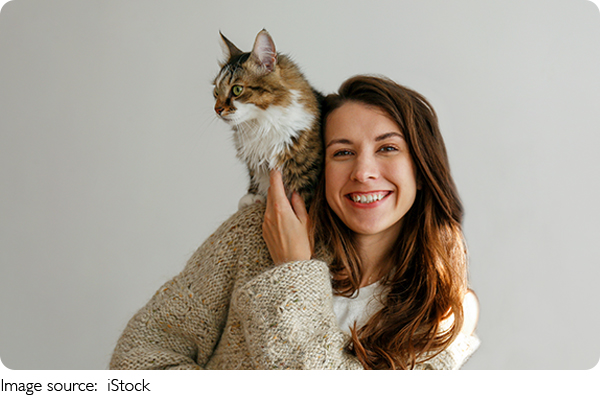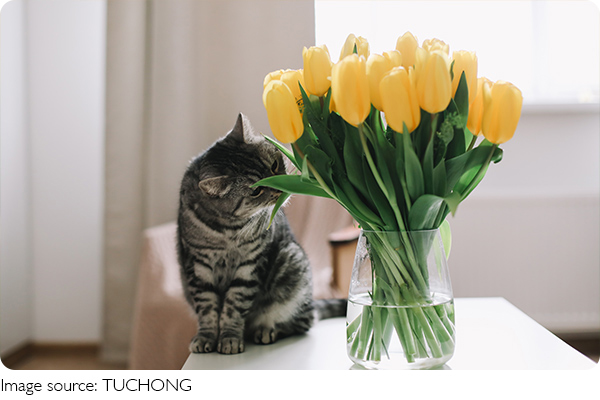Why Cats Rub?

If we live with a cat, we've probably experienced this: they walk up, tail held high, and gently rub their head or body against our leg. It feels like a sweet greeting, and in many ways, it is—but there's more to it.
Cats are subtle communicators, and rubbing is one of their most powerful ways of connecting with us and their world.
They're Leaving Their Scent
Cats have scent glands in several places: around their cheeks, forehead, base of the tail, and even along their sides. When they rub against us, they're actually "marking" us with their scent. This doesn't mean they're being possessive in a bad way—it's more like saying, "You're part of my safe zone."
In a cat's world, scent means comfort. By spreading their scent on us, they're making us feel like home to themselves—and signaling to other animals that we belong together.

It's a Social Greeting
Among cats, rubbing (also called "allorubbing") is a form of greeting and bonding. When two cats that know each other well meet, they'll often rub heads or bodies. It's a peaceful way to say, "Hello, I trust you."
So when our cat rubs against us, they're using that same friendly behavior. It's their way of including us in their inner circle—and expressing affection in a way that feels natural to them.
They May Want Attention or Food
Sometimes, the rubbing has a goal behind it. If it's close to feeding time or we've just opened a can of food, that leg rub might be their polite way of saying, "Hey, remember me?" Cats are smart—they know we respond to this kind of contact. It's gentle, persistent, and hard to ignore.
Of course, we should pay attention to the timing and body language. If it's paired with meows, tail flicks, or leading us to the kitchen, it's probably a request rather than a cuddle.
Comfort and Habit
Cats are creatures of habit. If rubbing against us feels good or leads to positive results (like petting or treats), they'll repeat it. It becomes part of their daily routine, especially with the humans they trust most. Some cats even develop favorite "rub spots" on furniture, walls, or our legs based on comfort and scent.
When It Becomes Excessive
Most rubbing is normal, but if our cat suddenly starts doing it constantly—or in combination with loud meowing or unusual behavior—it might be worth a vet visit. Sudden changes in behavior can sometimes signal stress, pain, or medical issues like vision loss or anxiety.
Otherwise, regular rubbing is just one of many cute quirks that come with living with a cat.
Each Cat Has Their Own Style
Some cats are all about head-butts. Others prefer full body rubs. Some do a quick pass; others linger for a moment. There's no one way to rub—it depends on their personality. Observing how and when our cat rubs helps us better understand their moods and preferences.

It's Their Way of Saying "You Matter"
Cats may not wag their tails or jump around like dogs, but their quiet signs of affection are just as meaningful. A soft nudge from a cat is a big compliment—it means they feel secure with us and see us as part of their world.
Let's Rub Back with Love
The next time our cat rubs against us, let's pause and enjoy the moment. Whether it's for scent-marking, saying hello, or asking for food, it's a sign that they trust and accept us.
Does your cat have a special way of rubbing or greeting you? Is it a head bump, a tail flick, or a full-body lean? Share your story—we'd love to hear how your feline shows love!


